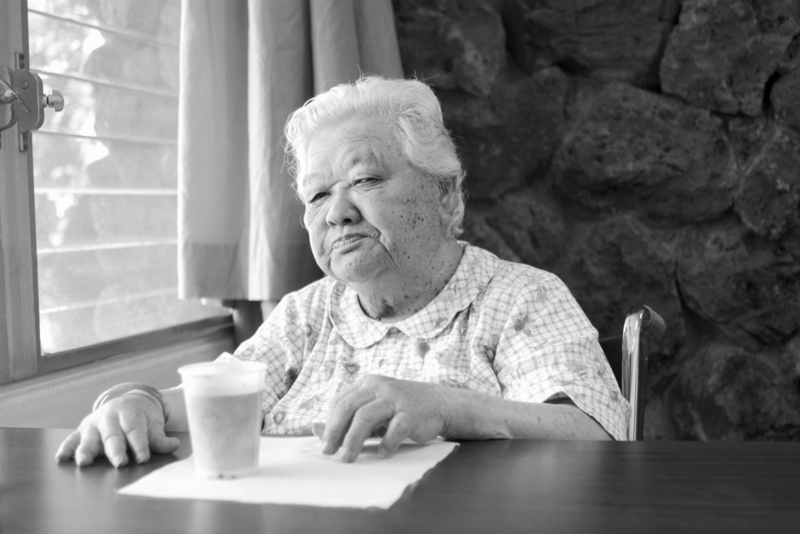
Part one of a two-part series
THURSDAY, Jan. 23, 2014 (HealthDay News) — For the millions of Americans with dementia, staying at home for as long as possible is a common goal. But independent living can pose certain risks for these adults — and prove challenging for family caregivers.
A new study of more than 250 Baltimore residents with dementia found unmet needs, especially concerning safety, health and meaningful activities, in almost all cases.
“Clearly, the biggest unmet need was in the area of personal and home safety,” said lead researcher Betty Black, an associate professor in the department of geriatric psychiatry at the Johns Hopkins School of Medicine in Baltimore.
“Ninety percent of people in our sample needed to address safety issues at home,” Black said. “That included things like fall risk management and wander risk management that really could be addressed perhaps by making alterations in one’s home, like grab bars in bathrooms. Or restricting someone’s access to tools that might be dangerous to them.”
The study, published recently in the Journal of the American Geriatrics Society, also took a comprehensive look at the unmet needs of the caregivers. The vast majority lacked referrals to support services and had no education on how to function in their role.
The average age of dementia patients in the study was 83. More than 60 percent of study participants also had general health care and medical needs that went unaddressed.
“That really involved whether they had been to their primary care physician in the last year, for example, or whether they needed care from a medical sub-specialist, like a rheumatologist or cardiologist,” Black said. “Or addressing issues like dental, vision and hearing problems.”
Black said it’s possible that managing safety and health problems early could reduce costly hospital readmissions, a big problem among people with mental impairment.
Many with Alzheimer’s may not have been diagnosed with the disease
It’s estimated that 5.4 million people in the United States have Alzheimer’s disease or another type of dementia. About 70 percent live at home, according to background information in the study.
The authors found that nearly one-third of study participants had never received a dementia diagnosis or evaluation. Larger-scale national research suggests an even bigger gap.
“What we think now is that about half of the people with Alzheimer’s disease have a diagnosis,” said Beth Kallmyer, vice president of constituent services at the Alzheimer’s Association. “That means that half don’t even know they have Alzheimer’s.”
The Baltimore researchers looked into whether people had meaningful activities in their lives and weren’t just sitting in front of a TV. About half did not, whether due to an unmet need for adult day care, senior services or in-home activities.
Meaningful activities are tailored to a person’s interests and capabilities, and include “even doing simple activities around the house,” Black said. “Like folding towels or helping to make a salad or setting the table — doing things that they may still know how to do, and can do, and feel that they’re engaged in daily life, rather than simply sitting.”
The researchers also found gaps in legal issues and advanced care planning for 48 percent of people with dementia. Several were still designated as having power of attorney for a spouse who was now their caregiver.
To their surprise, the researchers found that people with the mildest dementia and least difficulty functioning had more unmet needs than people with severe impairment.
Long-distance caregiving often not the best solution
They also discovered that people with dementia who have long-distance caregivers can fall through the cracks.
“One of the biggest challenges is when you’re not living in close proximity — Mom lives in San Diego and the daughter lives in Seattle,” said gerontologist Sara Shelton, owner of Seattle Aging Solutions. She said it’s easy to be misled by cheerful “everything’s fine” responses when you check in with your parents.
Black noted that “there’s some effort to make use of technology” to stay in touch with mentally failing family members. “Like Skype and [other methods] that kind of allow people to have a sense of that person, even if they’re not close by.”
Dr. Alex Smith, at the division of geriatrics at the University of California, San Francisco, said the new study was needed.
“We know a heck of a lot about the people who are living in nursing homes because there is so much data available about them,” Smith said. “It’s so much harder to study the people who are living in the community with dementia — when that is the overwhelming majority of people.”
In the Dec. 26 New England Journal of Medicine, Smith detailed the case of a 96-year-old widower in extremely bad health who insisted on living alone, and refused care from “strangers” at home. His son, living at a distance, was concerned about the unsafe, unsanitary conditions he found during monthly visits.
Smith suggested that it might be feasible for physicians to make at least an initial home visit to such patients. Such visits could give doctors a truer picture of the patient’s living conditions and safety, and help set realistic thresholds for when it would be too hazardous for them to stay in the home.
Kallmyer noted that the new Baltimore study didn’t delve into the cost of care. “It’s really expensive,” she said. “You know, if you can afford to pay a private duty companion to come in at $20 an hour and take care of your family 24/7, that’s going to help you have choices there. And some people don’t have that option.”
The new study is part of ongoing research to determine whether the use of in-depth needs assessments, followed up by care coordination, would be effective on a larger scale. If evidence is strong, Black said, such interventions could perhaps be covered by publicly funded programs like Medicare.
When it comes to living in the community, the needs and capabilities of the caregiver also come into play, not just the needs of the person with dementia, Black said. “It involves safety and quality of life for both those individuals.”
Tomorrow: What about the caregiver’s needs?
More information
Visit the U.S. Administration on Aging to plug into their Eldercare Locator.
Copyright © 2026 HealthDay. All rights reserved.

